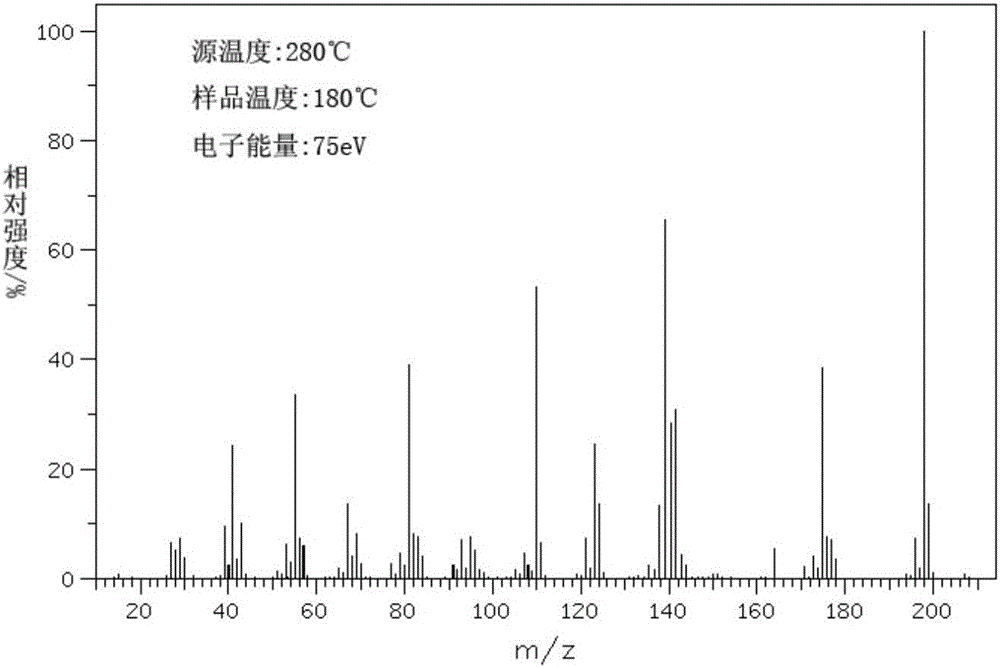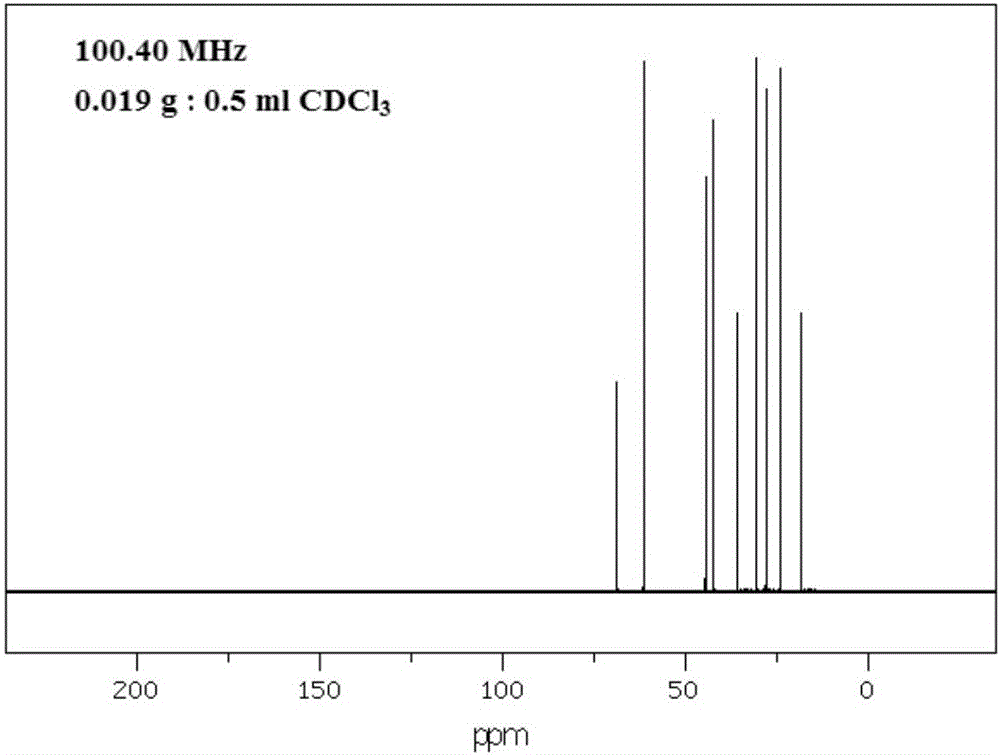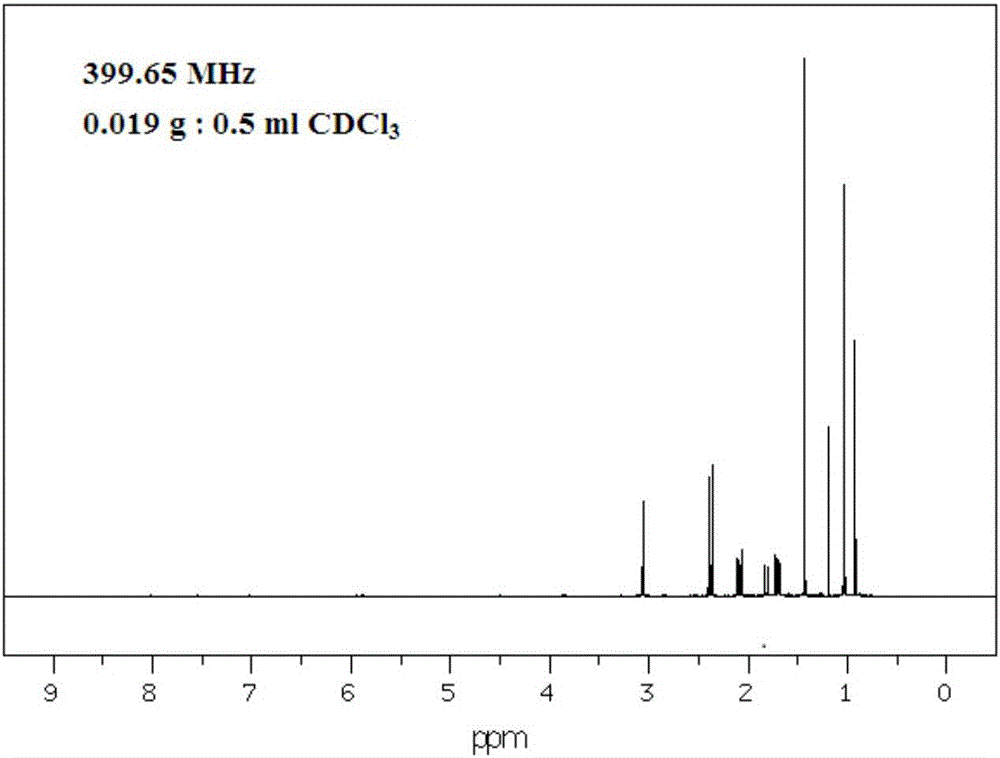Preparation method and application of 3-dimethylaminomethyl-3, 5, 5-trimethylcyclohexanol
A technology of trimethylcyclohexanol and dimethylaminomethyl, which is applied in the preparation of amino hydroxyl compounds, chemical instruments and methods, and the preparation of organic compounds, and can solve the problems of reducing catalytic activity and undiscovered problems
- Summary
- Abstract
- Description
- Claims
- Application Information
AI Technical Summary
Problems solved by technology
Method used
Image
Examples
preparation example Construction
[0063] Catalyst preparation:
[0064] Step 1: Take 45ml of distilled water, put it in an ice bath, add 5ml of titanium tetrachloride dropwise with a dropping funnel and stir to mix. Weigh 27g of ammonium sulfate and dissolve it in 100ml of water, add 5ml of concentrated hydrochloric acid and mix. Keep at 10°C, mix and stir the above two solutions for 20 minutes, transfer to a water bath at 90°C, add 7mol / L ammonia solution dropwise, carry out hydrolysis and precipitation, when PH=8, let stand at room temperature for 24h, filter and wash with water Chloride-free, collect the solid and dry it at 110°C for 24 hours, crush the prepared powder to below 100 mesh, impregnate it with an aqueous solution containing 0.26g of ammonium metatungstate, leave it for 24 hours, heat and stir continuously, and evaporate the water at 80°C To dryness, dry at 110°C for 24h, and continue to bake at 500°C for 4h in the air to form a carrier.
[0065] Step 2: Add 10 g of palladium dichloride, 15 ml...
Embodiment 1
[0067] Production of IPDA by-product 3-aminomethyl-3,5,5-trimethylcyclohexanol:
[0068] The reaction is carried out on a fixed-bed reaction equipment, which is composed of two-stage trickle-bed reactors, the first section is filled with 100ml zeolite, and the second section is filled with 100ml cobalt as the active component and diatomaceous earth as the carrier. The hydrogenation catalyst and the reaction raw materials pass through the first reactor and the second reactor sequentially from top to bottom. The hydrogenation catalyst was reduced with pure hydrogen at 400°C for 12 hours before running the test. The controlled temperature of the first-stage reactor is 50°C, and the controlled temperature of the second-stage reactor is 90°C. The reaction pressure is 20MPa. The feed rate of IPN is 80g / h, the feed rate of ammonia is 137g / h, and the feed rate of hydrogen is 110 standard L / h. When the device runs for 100h, the reaction discharge is analyzed by gas chromatography, wh...
Embodiment 2
[0074] In the autoclave of 1L, add 140g 3-aminomethyl-3,5,5-trimethylcyclohexanol (3-aminomethyl-3,5,5-trimethylcyclohexanol obtains the same way Embodiment 1,324g content is the aqueous formaldehyde solution of 37%.Add the catalyst palladium / titanium oxide and 0.42g6-hydroxycaproic acid sealed reaction kettle prepared by 0.7g above-mentioned steps, nitrogen replacement air 3 times, hydrogen replacement nitrogen 3 times.Open stirring To 600 rpm, raise the temperature in the reactor to 50°C, and increase the pressure in the reactor to 2MPa. React until the system no longer absorbs hydrogen, and the reaction time is about 3 hours. After the reaction, filter the reactant and the catalyst, The reaction product is divided into water phase and oil phase. The oil phase is separated from the water phase with a pear-shaped separatory funnel. The oil phase is taken for gas chromatography analysis, wherein 3-dimethylaminomethyl-3,5,5-trimethyl The content of methyl cyclohexanol is 95.7wt...
PUM
 Login to View More
Login to View More Abstract
Description
Claims
Application Information
 Login to View More
Login to View More - R&D
- Intellectual Property
- Life Sciences
- Materials
- Tech Scout
- Unparalleled Data Quality
- Higher Quality Content
- 60% Fewer Hallucinations
Browse by: Latest US Patents, China's latest patents, Technical Efficacy Thesaurus, Application Domain, Technology Topic, Popular Technical Reports.
© 2025 PatSnap. All rights reserved.Legal|Privacy policy|Modern Slavery Act Transparency Statement|Sitemap|About US| Contact US: help@patsnap.com



